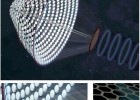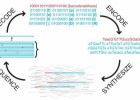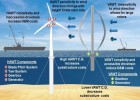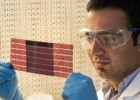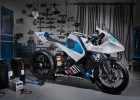Artificial Leaf Photosynthesis Can Turn Sunlight To Electricity
The artificial leaf is a device designed to mimic nature’s photosynthesis. Using nano technology, scientists have developed an advanced solar cell made out of semiconductors, with the size of a typical playing card. It basically looks like an ordinary chip, but with the ability to generate energy with sunlight and water, a technology called Artificial Photosynthesis.
The sun is the most abundant source of energy on earth. The smartest and cleanest way to generate energy is to tap into solar energy. Humans has been attempting to perfect a technology that can efficiently capture solar energy for several years. Today, a technology efficient, cheap and practical enough to produce electricity from the solar energy, is still yet to be created.
Plants capture solar energy naturally and flawlessly through a process called, photosynthesis.
Photosynthesis, the conversion of light energy into chemical energy in cells that contain chlorophyll, a green pigment. Photosynthesis occurs in most plants and algae and in some bacteria and protozoans. The process is also called carbon fixation, because it includes the production of carbon compounds that store the chemical energy for use in cell growth
- HowStuffWorks.com
An artificial photosynthesis system has great potentials. It could provide an endless flow of cheap and clean supply of electricity, without producing harmful greenhouse gases. It would significantly reduce pollution generated from producing electricity and powering vehicles, and it may also lead to the creation of more environmentally friendly technology.
How it works
The semiconductor device is submerged into an aqueous solution and together exposed to a light source, sunlight. The device then reacts and forms hydrogen gas bubbles.
There are two ways to make use of the hydrogen produced by the reaction of the device. It can be used as gasoline on hydrogen powered engine or machines or used in a fuel-cell setup, wherein electricity is generated by combining oxygen and hydrogen in water. This process is the reverse of photosynthesis.
That is basically how it works in simple terms. If you want to go through on the technical details of the process you can checkout the source websites I have cited below.
Today researchers are still tackling several challenges. Energy efficiency is number one, crucial to energy generation. Another major challenge is sustainability and stability of energy generation.
Several groups are taking the challenges on, but this technology might not coming out of the lab 10 years from now.
source: ScienceDaily, HowStuffWorks

